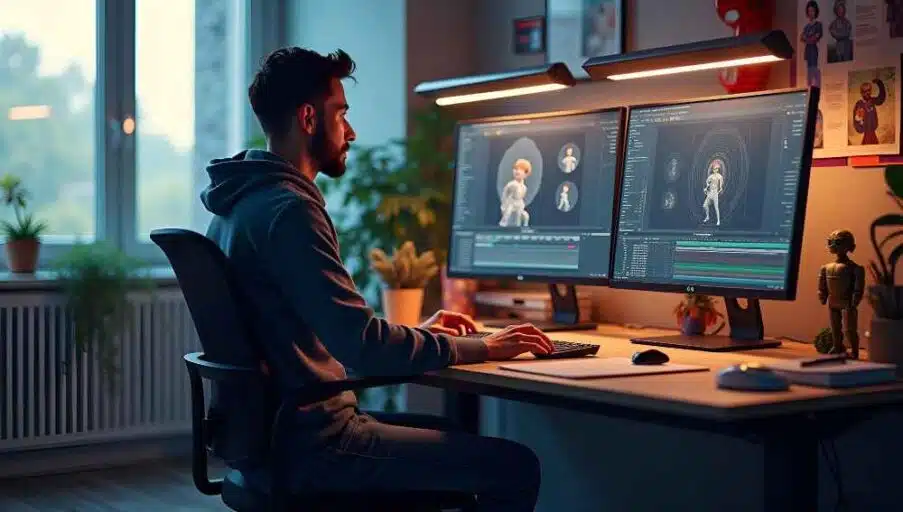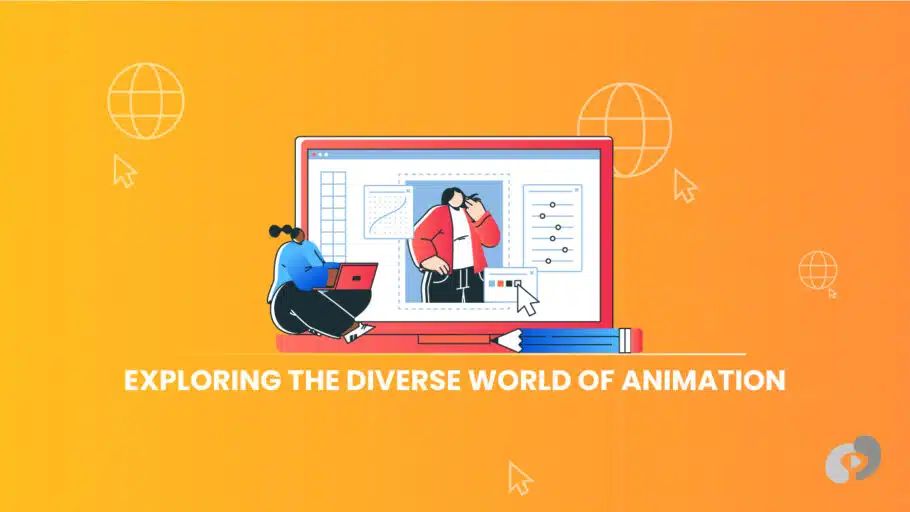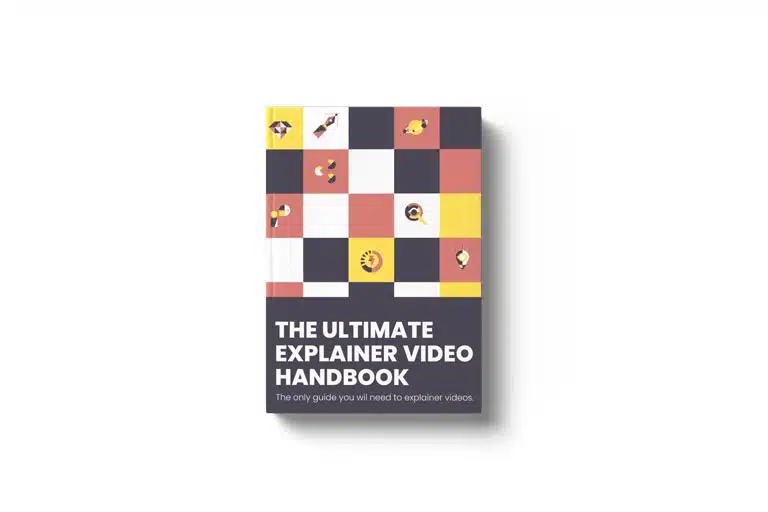Last Updated on January 4, 2025
Article Contents
Exploring 12 Different Types of Animation
Animation is a versatile and powerful medium that can bring stories, ideas, and products to life. From hand-drawn classics to cutting-edge computer-generated images, the world of animation offers a range of styles that cater to different creative visions. In this post, we’ll explore 12 fascinating types of animation styles, their unique characteristics, and how they’ve shaped the way we tell stories.
Understanding the diverse animation styles available helps creators choose the best approach for their projects.
Understanding Animation – A Brief Overview

At its core, animation is the process of creating the illusion of movement by displaying a series of images in rapid succession. Each frame in an animation shows a slight change in position or form, and when played in sequence, these frames simulate motion. Over the years, animation has evolved, incorporating new techniques and technologies to produce more dynamic, visually stunning content. Today, animators have a wide array of tools and methods at their disposal to bring characters and ideas to life.
12 Fascinating Types of Animation
There are several different types of animation that serve various purposes, from entertainment to education and marketing. Here are 12 of the most common animation styles:
1. Traditional 2D Animation
Traditional 2D animation, also known as hand-drawn animation, involves drawing each frame by hand. This technique has been used in classic animated films like Disney’s Snow White and the Seven Dwarfs and The Lion King. Each frame is slightly different from the last, creating smooth, fluid motion. Though labor-intensive, traditional 2D animation is known for its charm and timeless appeal.
2. 3D Computer Animation
One of the most popular types of animation styles today, 3D computer animation uses digital tools to create three-dimensional models. Unlike 2D animation, 3D animation gives characters and objects depth, making them appear more lifelike. Pixar’s Toy Story was one of the first major films to use this technique, revolutionizing the industry. Today, 3D animation is widely used in films, video games, and commercials.
3. Stop Motion Animation
Stop motion animation involves photographing physical objects or models, moving them slightly between each frame. When played in sequence, these still images create the illusion of motion. Films like Coraline and The Nightmare Before Christmas are great examples of stop motion animation, where puppets or clay figures are moved by hand to create the scenes. Among the various types, stop motion animation stands out for its handcrafted appeal and meticulous production process.
4. Claymation
A subset of stop motion animation, claymation involves creating characters and scenes using clay or plasticine. The characters are molded by hand, and each slight movement is captured frame by frame. Popular claymation works include Wallace and Gromit and Chicken Run. Claymation requires patience and precision, but it results in a distinct, textured animation style that stands out.
5. Cut-out Animation
Cut-out animation uses flat, two-dimensional figures made from paper, fabric, or other materials. These figures are moved in small increments between each frame to create the illusion of motion. A well-known example of this style is South Park, which initially used cut-out animation before transitioning to digital methods. It’s a simple but effective technique for creating unique and quirky animations.
6. Rotoscoping
Rotoscoping involves tracing over live-action footage to create animated characters or scenes. Animators trace each frame of film to capture realistic movement and details. This technique was famously used in A Scanner Darkly and the original Snow White and the Seven Dwarfs. Today, it’s often used to blend live-action footage with animated elements seamlessly.
7. Motion Graphics
Motion graphics are animations used to convey information or create visual effects, often in commercials, title sequences, or presentations. Unlike character-based animation, motion graphics focus more on text, shapes, and designs that move across the screen. They are commonly used in marketing and advertising to present data or explain complex ideas in an engaging, visual format.
8. Kinetic Typography
Kinetic typography is a specific type of motion graphics that focuses on animated text. Words and letters are animated to move and interact in ways that help convey a message or emotion. This technique is widely used in lyric videos, advertisements, and title sequences, making the text itself part of the storytelling process.
9. Cel Animation
Cel animation is a traditional technique where characters are drawn on transparent sheets (or “cels”) and layered over static backgrounds. Each frame is photographed sequentially to create movement. While cel animation has largely been replaced by digital methods, it was once the dominant style in animated films and TV shows. The Simpsons used cel animation for its early seasons before switching to digital.
10. Flash Animation
Flash animation gained popularity in the late 1990s and early 2000s with the rise of web-based content. It allowed creators to produce animations quickly and easily using Adobe Flash (now Adobe Animate). Flash animation was a staple of early internet cartoons, with shows like Homestar Runner and Happy Tree Friends gaining large followings.
11. Anime
Anime is a Japanese style of animation that has become hugely popular worldwide. Characterized by its distinct visual style—large, expressive eyes, vibrant colors, and detailed backgrounds—anime spans a wide range of genres, from action to romance. Notable anime titles include Naruto, Spirited Away, and Attack on Titan. While traditionally 2D, many modern anime incorporate 3D animation elements.
12. Experimental Animation
Experimental animation pushes the boundaries of conventional animation techniques. This style often incorporates mixed media, abstract designs, and unconventional methods to create visually striking and thought-provoking works. Artists who specialize in experimental animation use everything from paint and sand to digital tools, blurring the lines between animation and fine art.
The Evolution of Animation Styles
Animation has come a long way from its early beginnings. Traditional hand-drawn techniques dominated the early 20th century, but the introduction of computers in the late 20th century opened up new possibilities for animators. As technology has advanced, animation styles have evolved, allowing for greater complexity, realism, and creativity.
3D animation, for instance, has grown from simple geometric shapes to highly detailed, lifelike models. Motion graphics and kinetic typography have expanded the use of animation beyond entertainment, becoming essential tools in marketing and education. Meanwhile, traditional styles like stop motion and claymation continue to thrive, valued for their tactile, handmade feel.
Choosing the Right Animation Style for Your Project
With so many different types of animation styles available, choosing the right one for your project can feel overwhelming. However, by considering a few key factors, you can narrow down the best style for your needs.
Defining Your Project Goals
Start by identifying the main objective of your project. Are you telling a story, explaining a concept, or marketing a product? If your goal is to engage an audience emotionally, traditional 2D or 3D animation might be the best fit. On the other hand, if you’re looking to present data or showcase product features, motion graphics or 3D product demos might be more appropriate.
Considering Your Target Audience
Your target audience plays a crucial role in determining which animation style to use. Younger audiences may respond better to bright, playful styles like traditional 2D animation or claymation, while a more mature audience might appreciate the sophistication of 3D animation or anime. Tailoring the style to your audience ensures that your content resonates with the right people.
Evaluating Your Budget and Resources
Some animation styles require more time, skill, and resources than others. For instance, traditional hand-drawn animation can be labor-intensive and costly, while motion graphics or cut-out animation may be more budget-friendly. It’s essential to evaluate your available resources and select a style that aligns with your project’s budget.
Analyzing Industry Trends
Staying up to date with animation trends can help guide your decision. For example, 3D animation and motion graphics are currently popular in marketing and explainer videos, while anime continues to dominate in global entertainment. By understanding what’s trending, you can choose an animation style that feels current and relevant.
Seeking Expert Advice
If you’re unsure which style to choose, consulting with a professional animator or a creative agency can provide valuable insights. They can help you weigh your options and determine the most effective animation style based on your project’s unique needs.
The Future of Animation – Emerging Trends and Technologies
As technology continues to evolve, so does the world of animation. We’re seeing the rise of real-time rendering, which allows for faster production times, and virtual reality (VR), which is adding new dimensions to animated storytelling. Artificial intelligence (AI) is also being used to automate certain animation tasks, freeing up animators to focus on the creative aspects of their work.
Looking ahead, we can expect more immersive, interactive animation experiences that blend the lines between reality and fantasy. The continued growth of 3D animation, along with innovations in motion capture and virtual production, will likely shape the future of the industry.
Conclusion
Animation is a diverse and ever-evolving medium, with different types of animation styles catering to a variety of projects and audiences. Whether you’re working on a film, an educational tool, or a marketing campaign, there’s an animation style that can bring your vision to life in a unique and engaging way.
By understanding the strengths of each animation type and carefully considering your project’s goals, audience, and resources, you can select the perfect animation style to bring your ideas to life in a visually compelling manner. As the animation industry continues to evolve, new technologies and trends will offer even more opportunities to explore different approaches and styles. By staying informed and flexible, you can ensure your animations remain engaging, relevant, and impactful.
Whether you’re a seasoned animator or just starting your journey, knowing the different types of animation styles will give you the creative tools to make informed decisions. As animation technology becomes more accessible, there’s never been a better time to experiment with these techniques and find the style that best suits your project. The world of animation is as limitless as your imagination, and with the right approach, you can tell stories that resonate and inspire across all sectors.
No matter what you choose, animation offers a powerful way to communicate, entertain, and educate—so dive in, explore the possibilities, and bring your vision to life.

